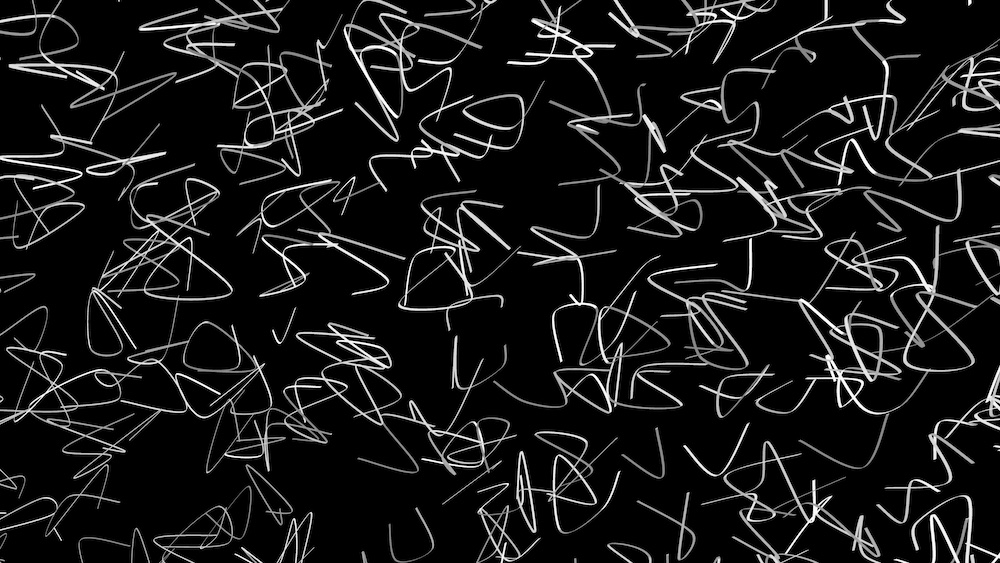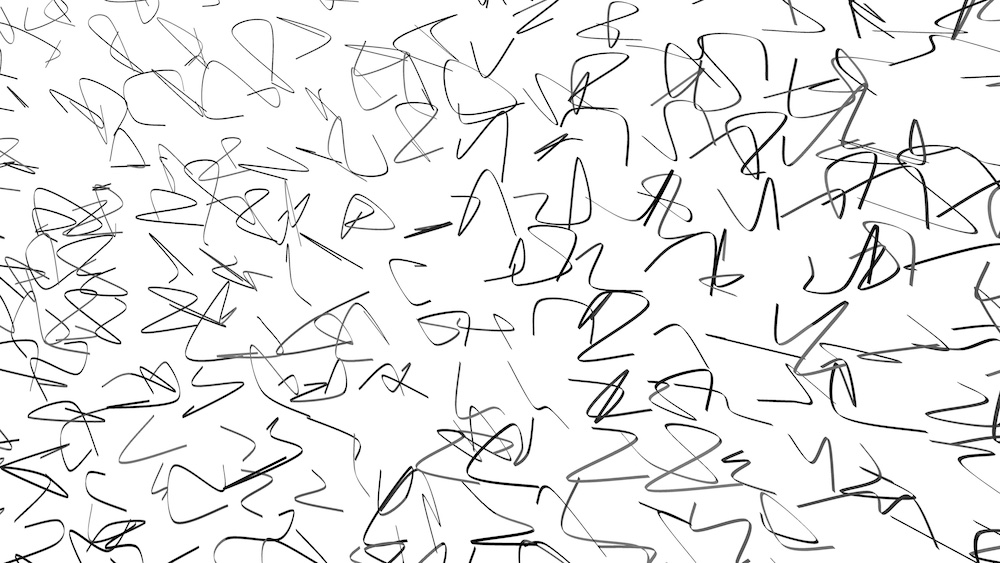Corpography
'Corpography' is an interactive artwork, in the form of an interactive immersive digital video projection environment, that automatically generates evolving heuristic 3D graphic characters that resemble human hand-writing. The characters are machine generated but the environment tracks viewers positions and movements (interactors) in the installation space and this data is employed to determine the Point of View (PoV) from which the 3D scene is rendered (the camera is positioned on the head of one of the interactors) and the collective joint positions of the interactors also influence the behaviour of the control points that give form to the individual characters. The intention is to create a form of automatic writing made by a machine (instead of by a human). In conjunction with this, the idea of a form of embodied (sub-conscious) writing is explored along with that of a machine unconscious.
Automatic writing is commonly understood to be a form of unconscious expression, where a human in a fugue, or similar, state writes automatically. The writing often resembles hand-writing but tends to look more like scribble. The perceived value of automatic writing is dependent on the apprehension that human beings possess a subconscious (or unconscious) that can be interpreted through the act of automatic writing. The technique was popular amongst early 20thC aficionados of theosophy and early psychology. Surrealist artists such as Andre Masson used the technique to develop semi-abstract artworks, whilst later authors and artists, such as Henri Michaux and Cy Twombly, employed the technique to develop highly sophisticated paintings and 'writings' that questioned both the authenticity of the artist's mark-making and the semiotic potential of writing. Jackson Pollock's late paintings might also be interpreted within this framework.
This work explores the potential for machines to create automatic writing in collaboration with the unconscious (automatic) character of human movement, raising the question of whether a machine might have an unconscious, whilst at the same time critiquing the idea that humans may. In some respects this work is a further reflection on the themes I was exploring in earlier works, such as these large-scale computer-generated pen-plots on paper from 1984.
Video documentation of the interactive environment with interactors pending.
Studio video documentation
More studio video documentation
Video documentation (fly-through screen recording)
Video documentation (fly-through screen recording with skeleton tracking turned on)
Studio stills
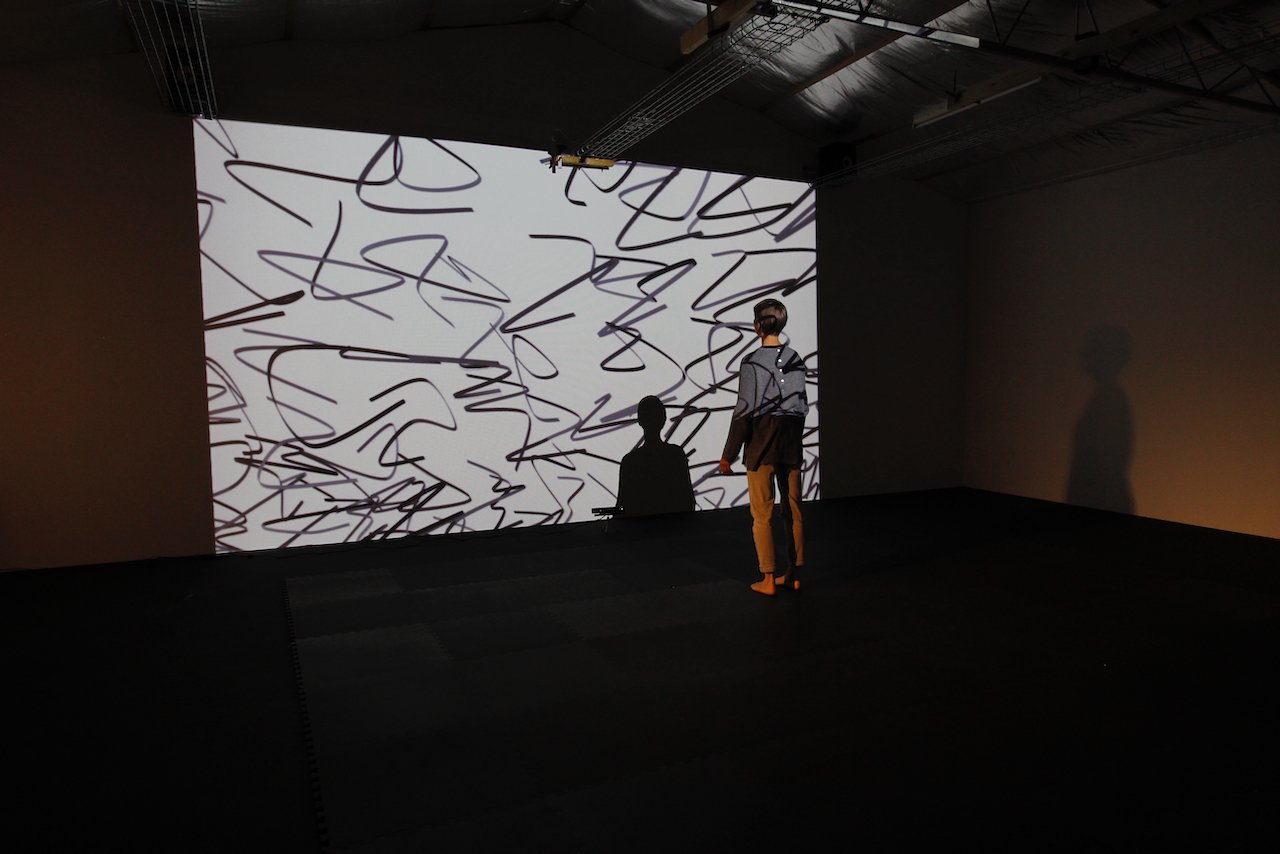
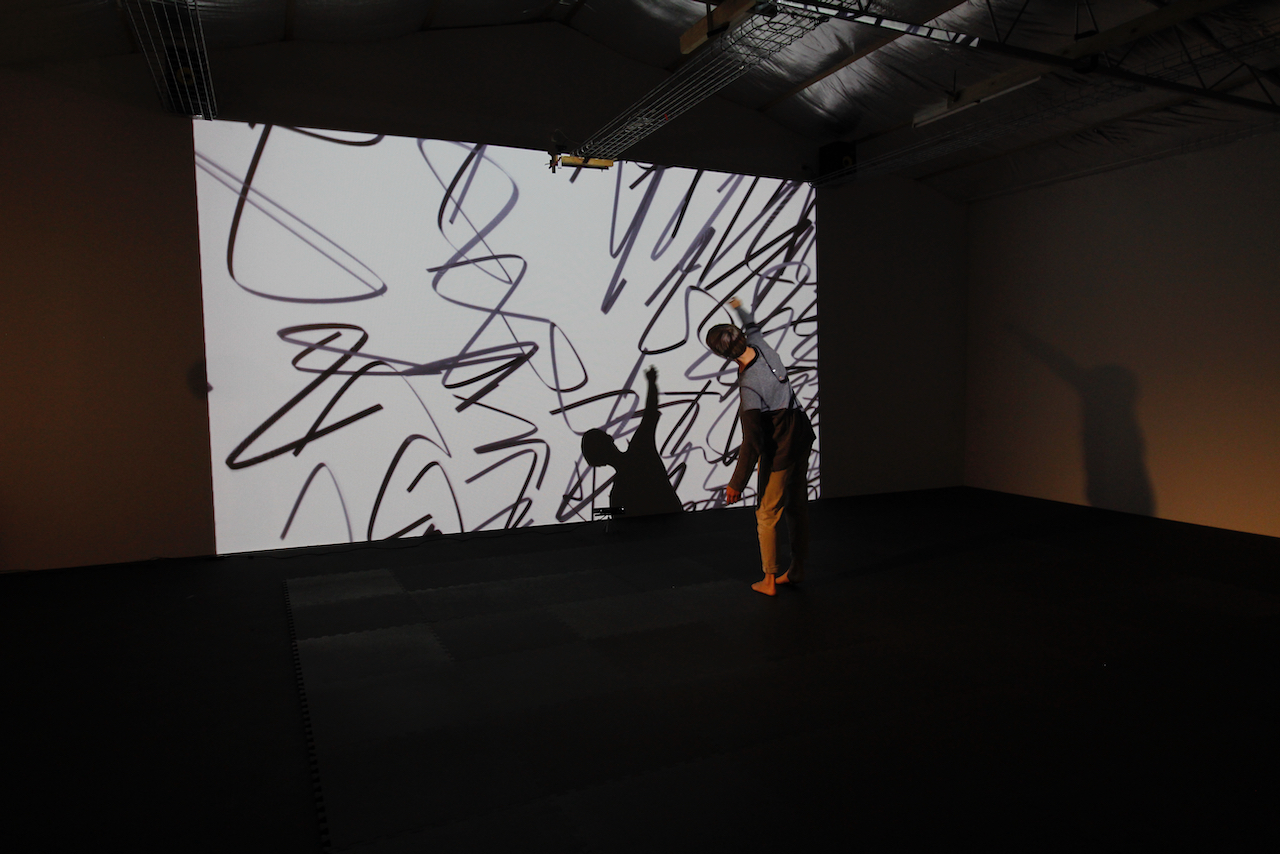

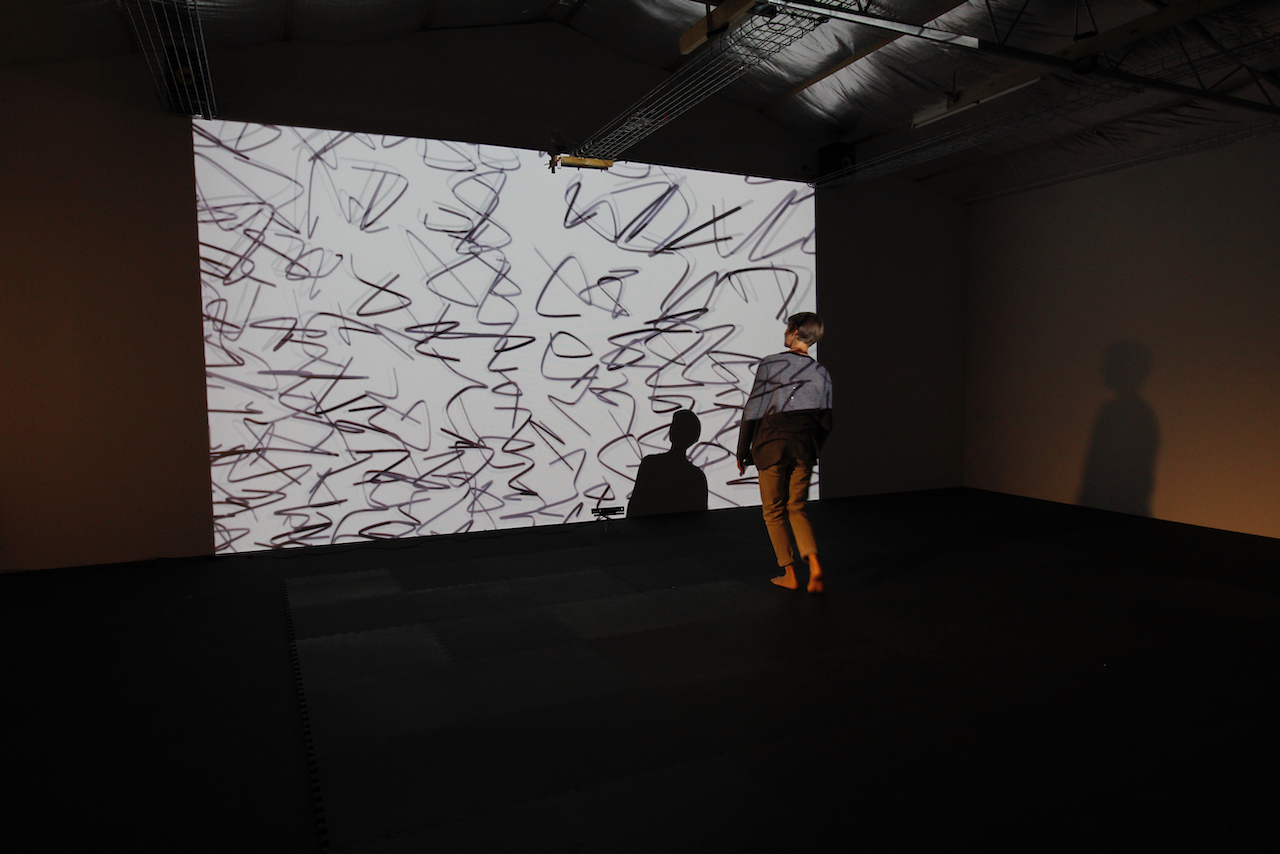
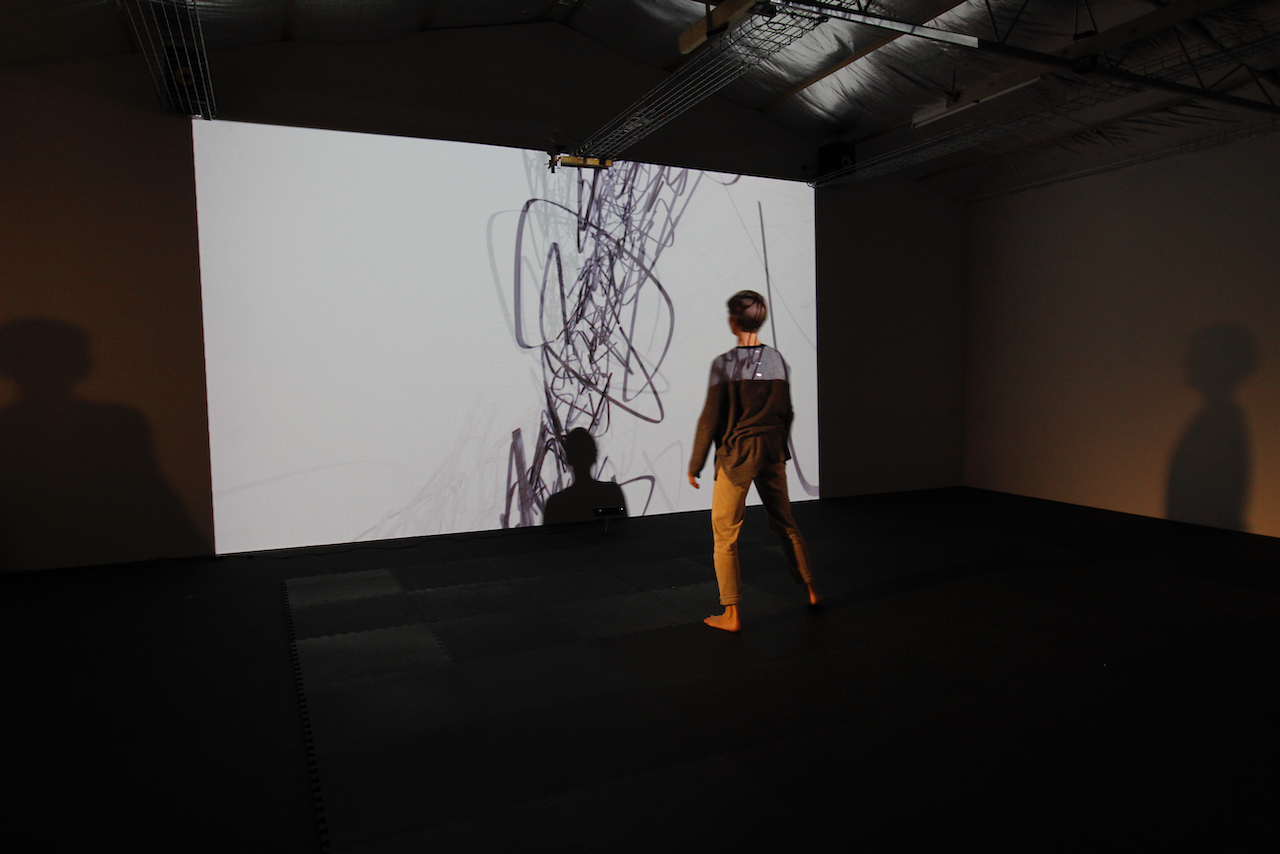

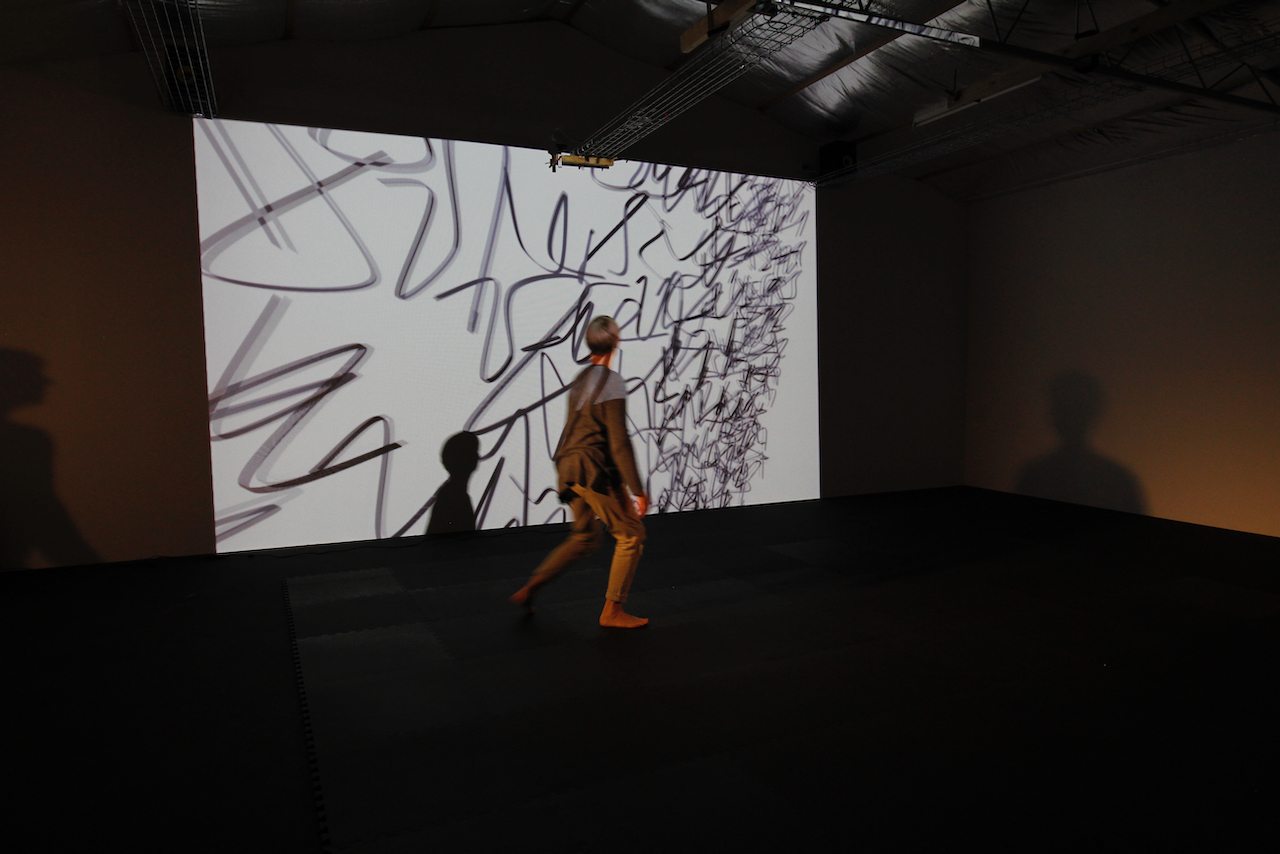
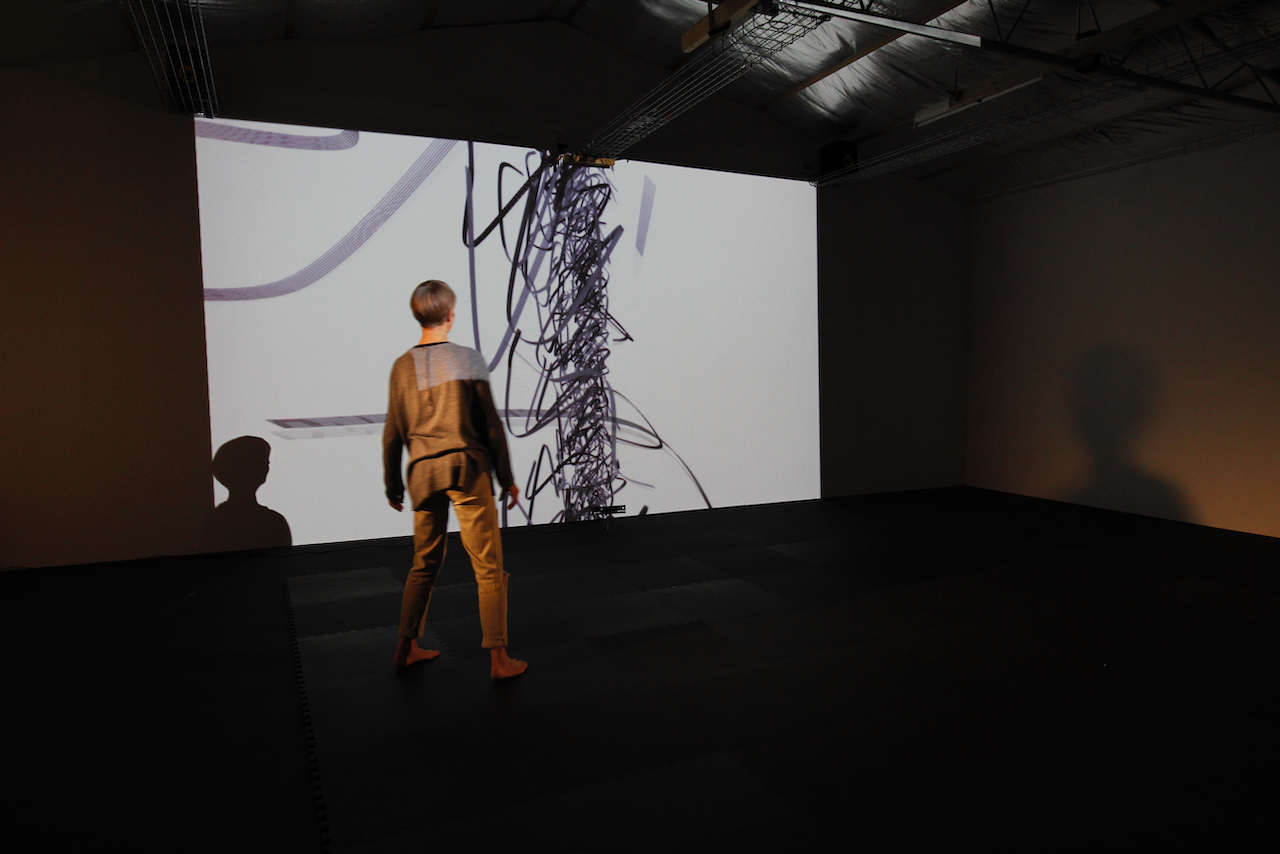
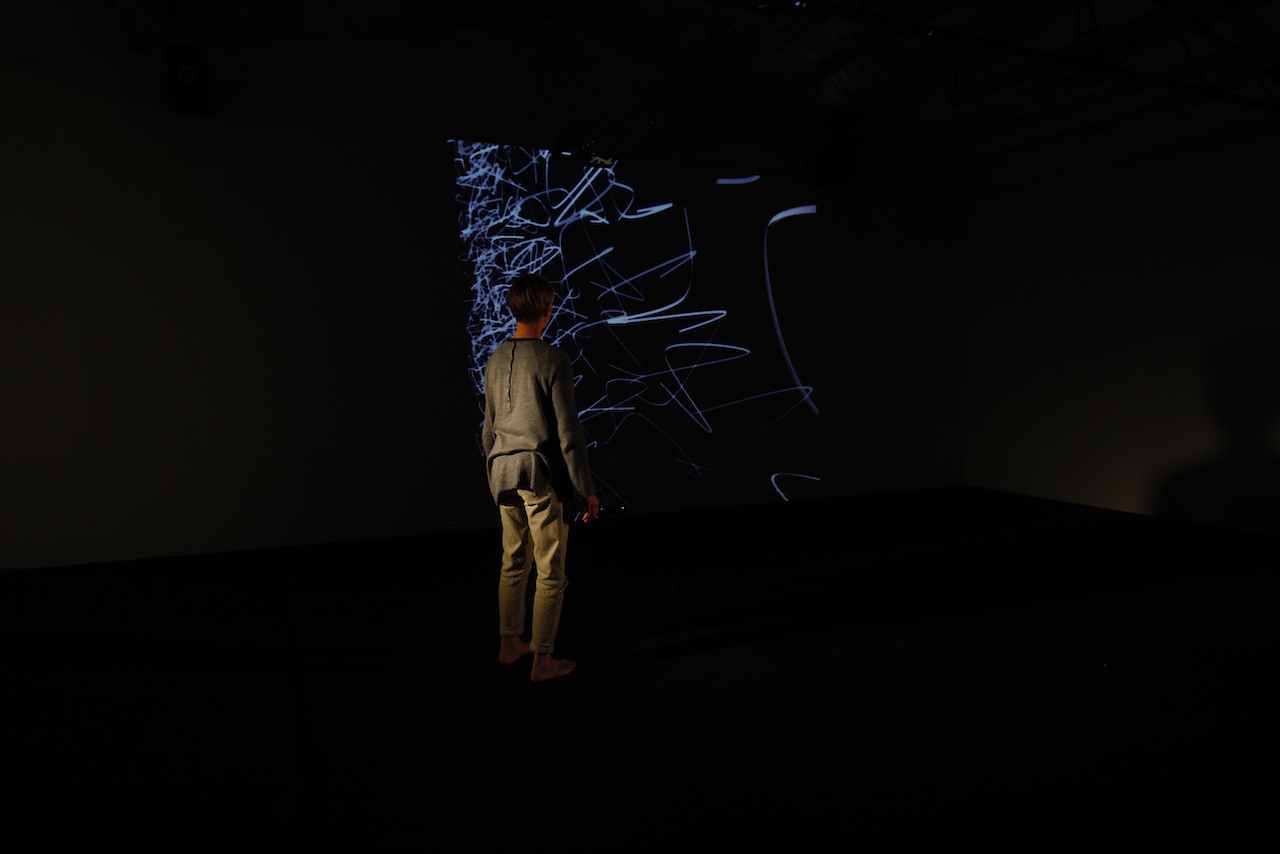

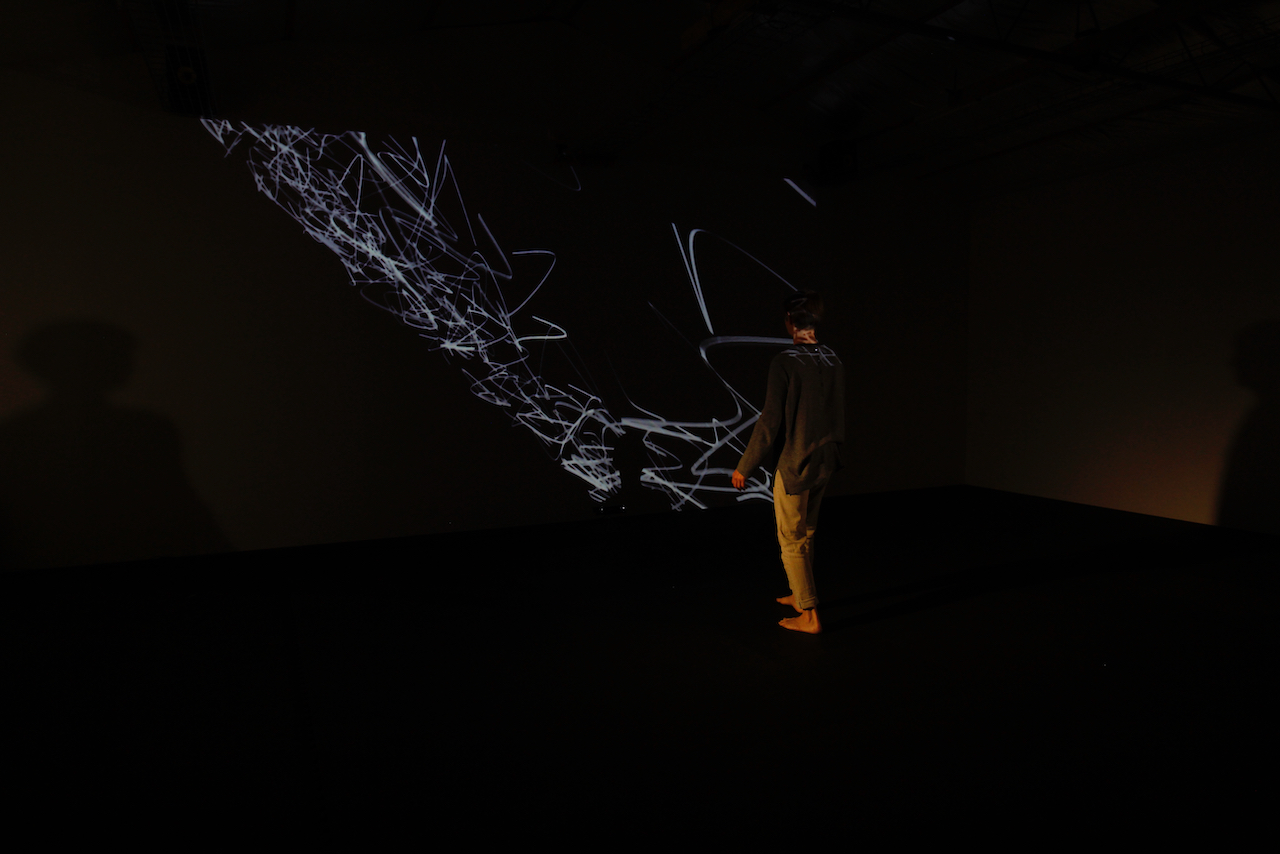
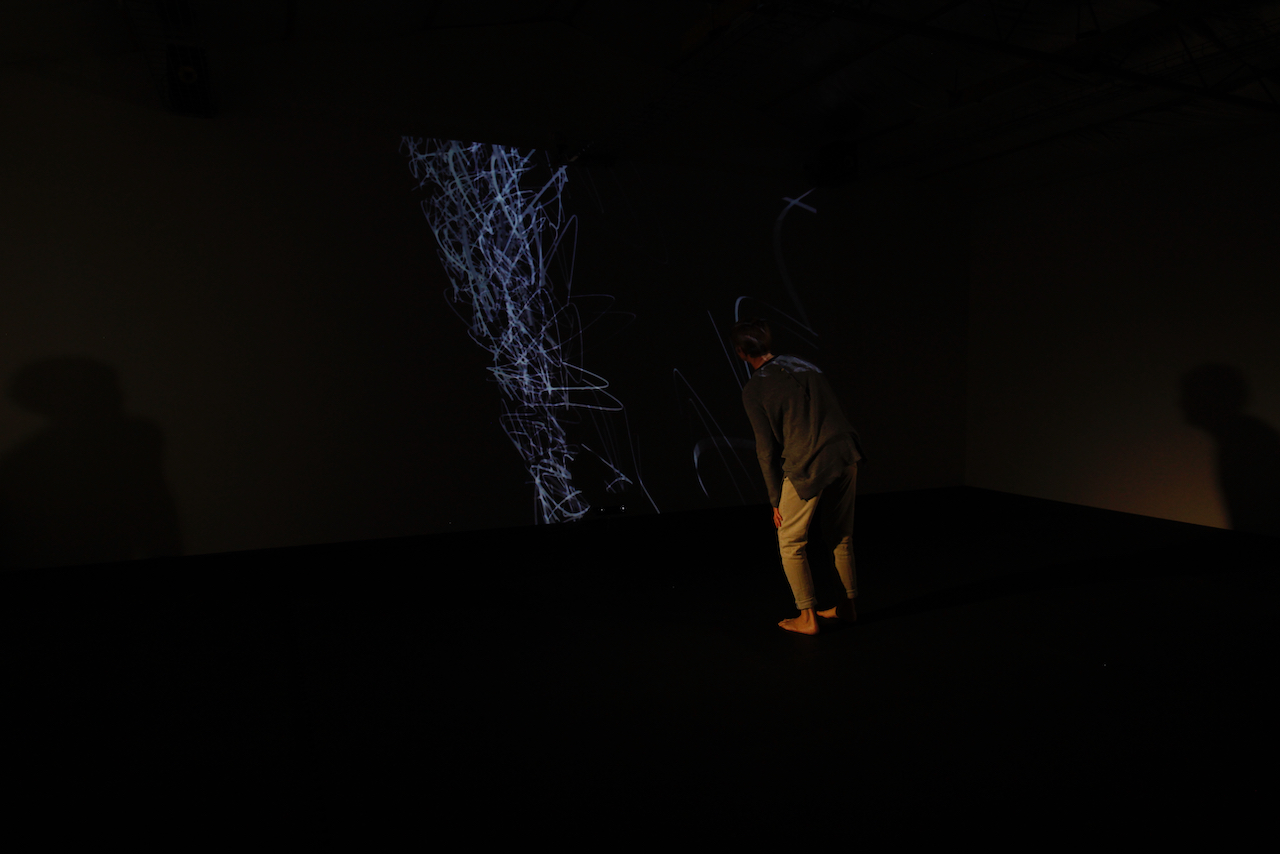
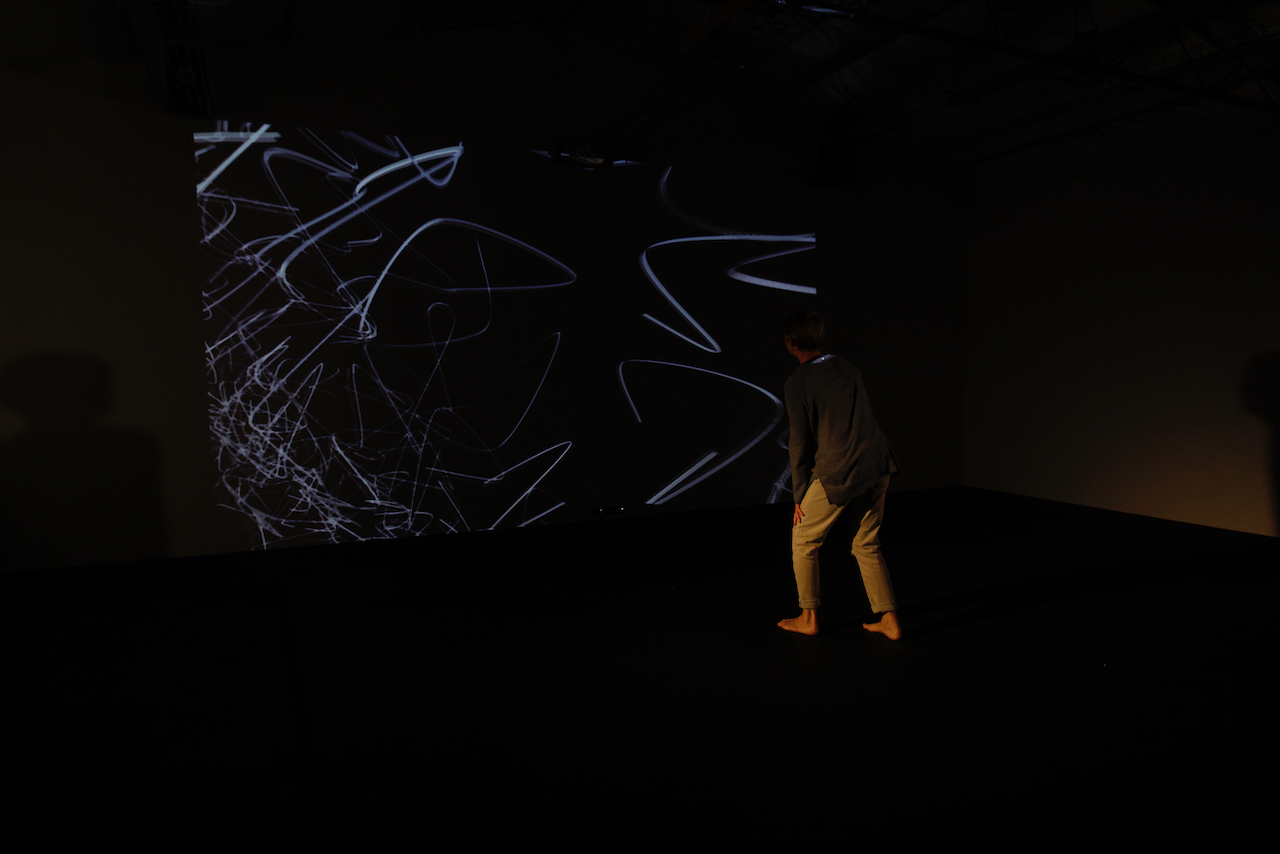
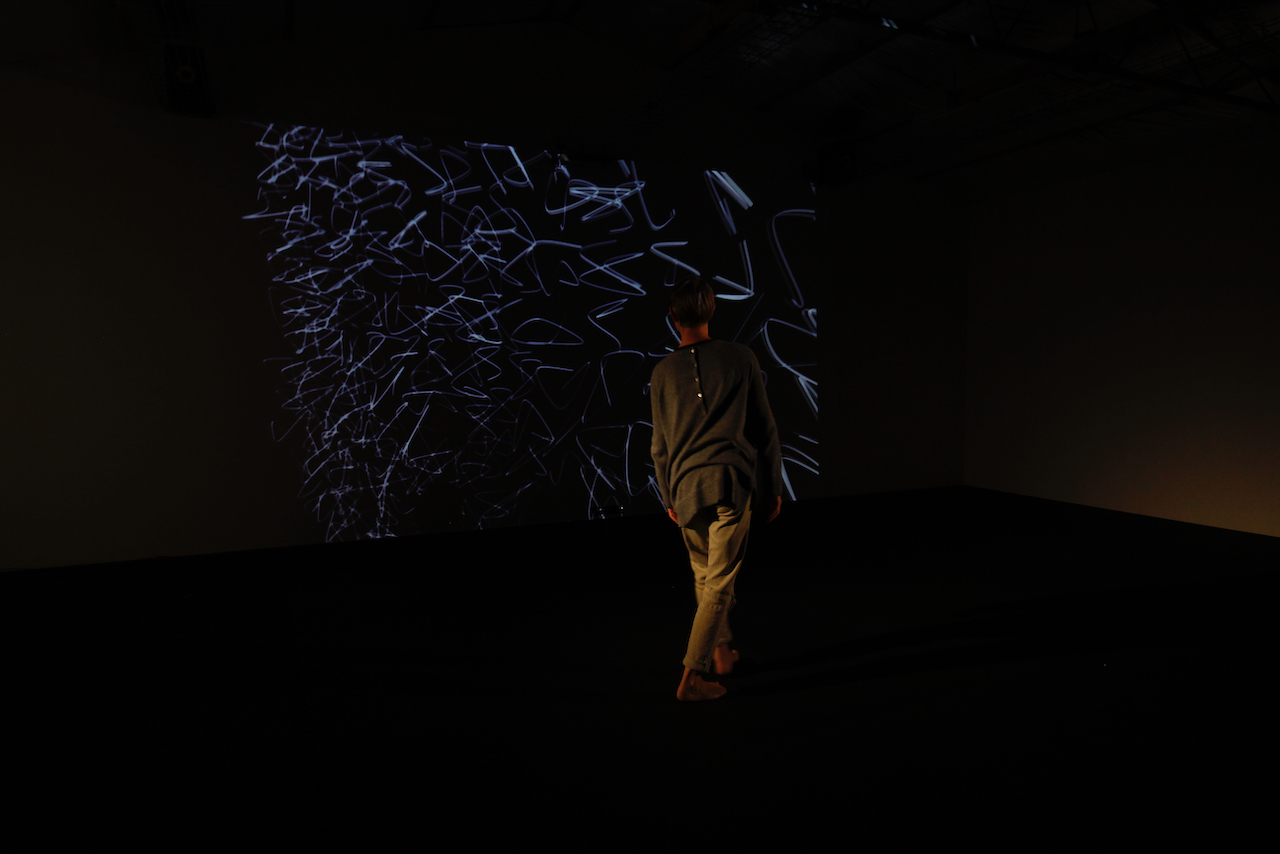
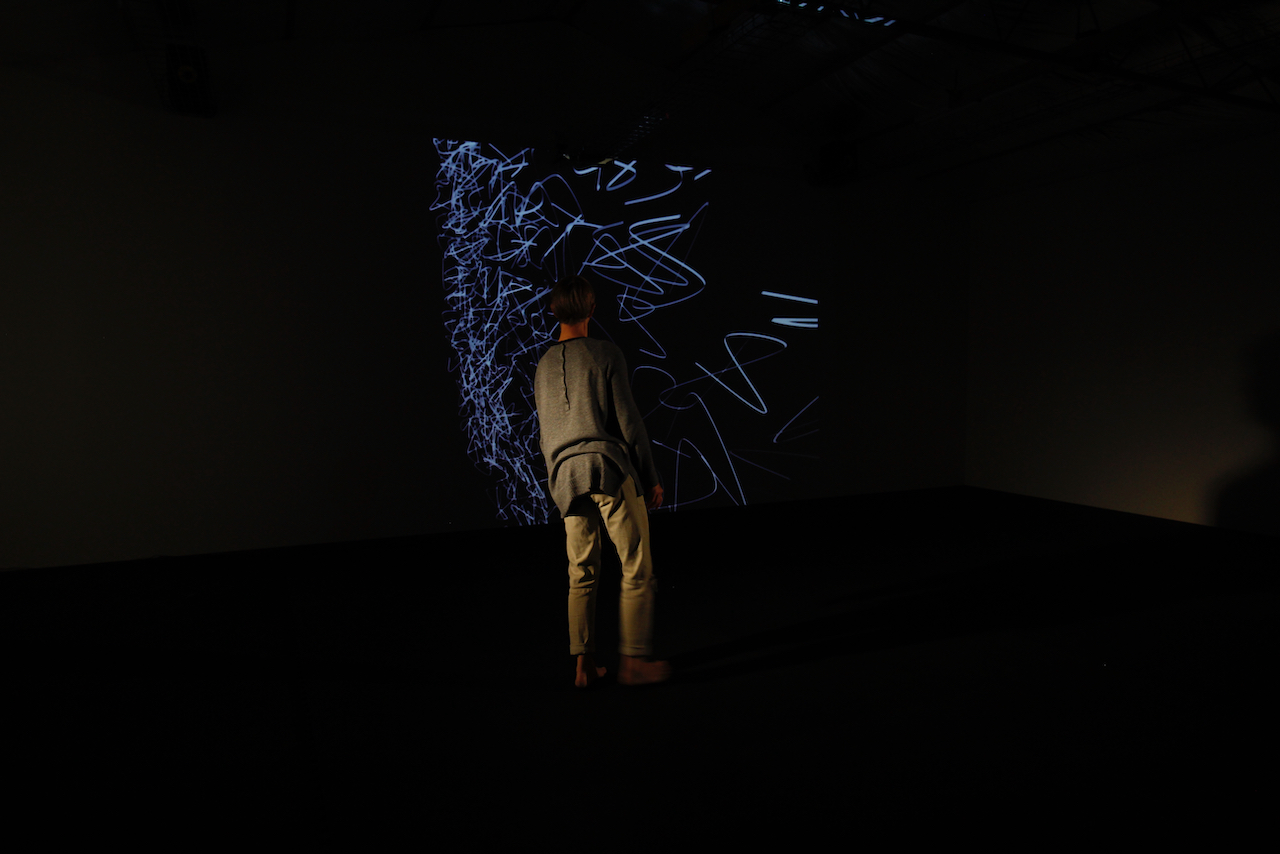

Screen stills
